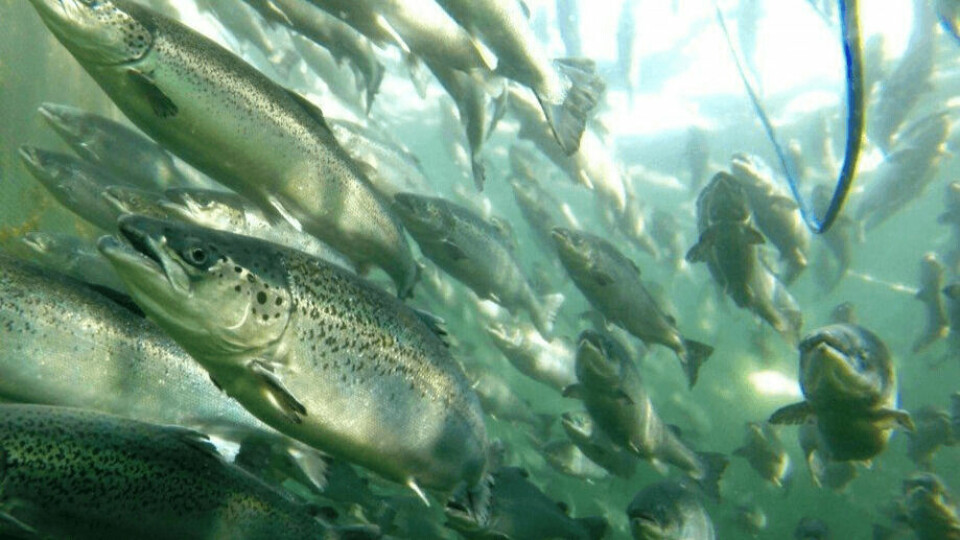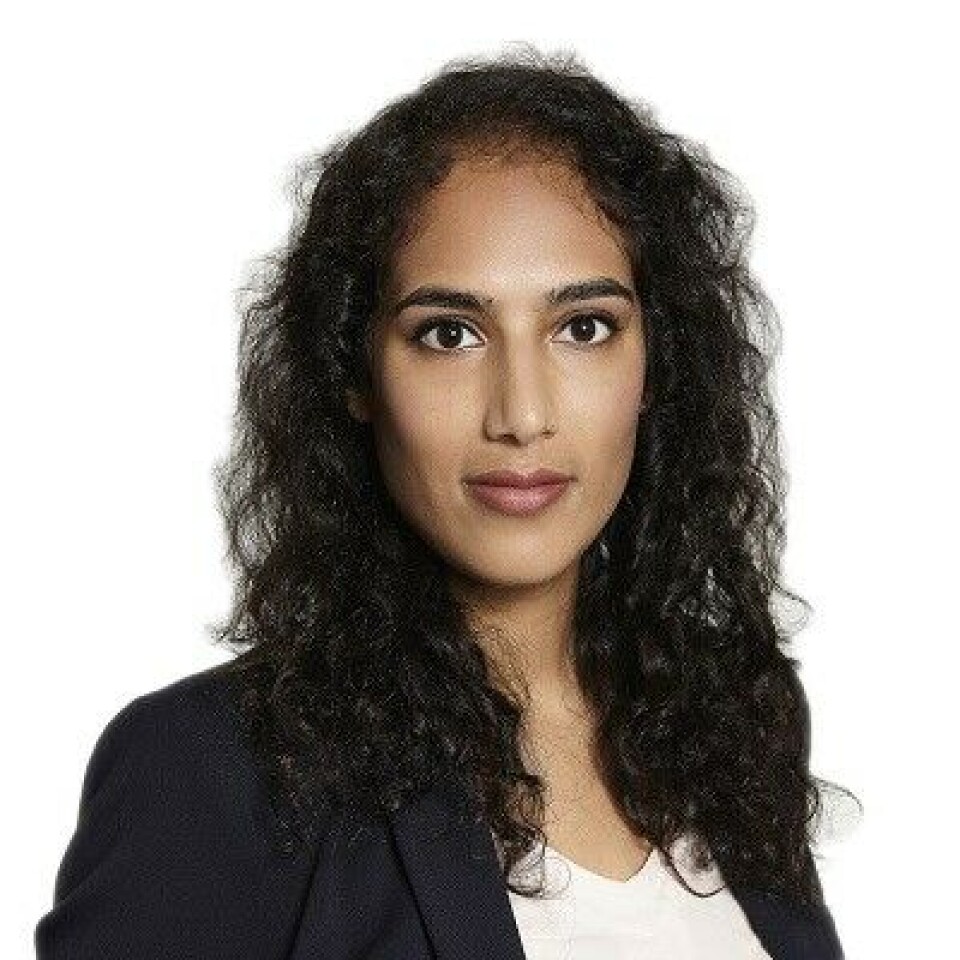
Is farmed salmon more sustainable than meat?
Faazi Adam is research and engagement manager at FAIRR, an investor network looking at environmental, social and governance (ESG) risks in the global food sector. Here she takes a look at salmon farming’s sustainability, coinciding with the publication today of Coller FAIRR’s ESG Risks and Opportunities in Aquaculture Special Report, available here.

Aquaculture is the fastest growing food production sector globally. It currently accounts for over half of fish consumed by humans. In 2018, global farmed fish production hit approximately 82.1 million tonnes in production figures, and was valued at $250 billion.
With a growing human population, this sector is also set to play an essential role in fulfilling future protein demand. Government targets for the anticipated growth of salmon production in particular are very ambitious globally. After introducing a new regulatory regime, Chile increased its salmon production by 14% from 2018-2019 and the Norwegian government aims to increase salmon production volumes five-fold from the years 2014 to 2050.
The sector is widely regarded as a more sustainable alternative to livestock, with a lower environmental footprint than meat, but is this actually the case?
The green case for farmed salmon
In some ways, salmon is a greener option than meat. The salmon production industry is relatively well managed in comparison to livestock production. In terms of water usage, salmon is less water-intensive than land-based proteins to produce. Salmon’s freshwater consumption uses 2000 litres per kilogram of edible meat. That’s less than half the amount required for Poultry (4300 l/kg) and significantly less than the amount needed for beef production (15400 l/kg).[1]
The sector is also innovating rapidly to improve its sustainability profile. Recirculating Aquaculture Systems (RAS) are land-based production systems that purify and reuse water supply, and raise salmon from hatchery without the need to place them in the sea. This also allows facilities to have much greater control over conditions, and eliminates certain biological threats such as sea lice, predator attacks and algal blooms. The contained environments also avoid the risk of escapes and pollutants entering the marine environment, making them a safer alternative to sea-based farms in many ways.
Murkier waters: the climate challenges facing salmon production
However, when it comes to the greenhouse gas (GHG) emissions profile of farmed salmon, the picture is murkier. The GHG impact of livestock production, beef in particular, is well documented. The beef industry alone contributes to 41% of all animal agriculture emissions. The data for GHG emissions produced by individual seafood species is less definitive than livestock, however a study into salmon, conducted by SINTEF, found that salmon’s climate impact actually falls somewhere in between chicken and beef.[2] And as marine salmon farming remains highly dependent on environmental conditions, the sector is vulnerable to climate risk. A changing climate has direct consequences for fish farms, with more extreme weather, rising sea levels and higher temperatures creating major disruption to production activities.
One of the advantages of RAS is that facilities can, in theory, be located anywhere in the world. Salmon production would no longer be limited to the Norwegian, Chilean, Scottish and North American coastlines. However, as these systems require high amounts of energy - one study suggests that when comparing farmgate emissions from salmon production, RAS is twice as emission-intensive than marine net pens[3] - they are only effective at reducing overall emissions when replacing air freight from Europe to distant markets in Asia. As China is one of the fastest-growing international markets for salmon, with imports growing 19% per year between 2012-2019[4], producers are keenly aware of the climate challenge this new demand presents. SINTEF finds that fresh salmon produced in RAS in Shanghai emits approximately a third fewer emissions compared with transporting fresh salmon to Shanghai by air,[5] presenting a growth opportunity for land-based salmon production in Asia.
Laying out a vision for the future of salmon farming: a unique opportunity
Ambitious growth plans for salmon production must naturally be underpinned by a clear strategy for sourcing higher volumes of sustainable feed. Whilst usage of fishmeal and fish oil (FMFO) has declined considerably and producers are exploring the potential of novel ingredients, the industry does not yet have a definition of what sustainable feed looks like or a clear pathway to achieve it. Feed sourcing remains a central sustainability challenge for salmon farming: that’s why FAIRR recently launched its sustainable aquaculture engagement to help the world’s largest salmon companies discloses strategies to manage the risks in in feed supply chains to support future growth.
Emerging R&D into more sustainable aquafeed solutions, such as generating feed from food waste or insect-based food is offering huge potential to reduce environmental impacts. Many salmon producers are already making headway in phasing out unsustainable feeds whilst developing new feed ingredients that are commercially scalable. They’ve been looking into possible alternatives such as insect-based ingredients, as well as more novel R&D projects such as CO2 Bio, which uses CO2 produced from the oil and gas industry to produce algae based feed. But without a clear understanding of exactly how these efforts will support ambitious production goals, it is difficult for stakeholders to assess companies’ preparedness for this challenge.
A sustainable solution to our protein problem
Salmon has the potential to be greener than meat. But as global protein demand continues to surge, investors will need to see salmon aquaculture working to better manage its ESG risks if it is to provide a sustainable and reliable solution to the world’s growing protein problem. Tackling biological challenges while minimising climate impacts and shifting towards more sustainable feed ingredients will be key to ensuring the longevity of global aquaculture.
The FAIRR Initiative’s Sustainable Aquaculture engagement asks eight global salmon companies to diversify their food ingredients towards lower impact and more sustainable alternatives to enable production growth, reduce climate risk exposure and ensure risks associated with soy, fishmeal and fish oil sourcing are being adequately managed. Take a look at FAIRR’s latest report ‘ESG Risks and Opportunities in Aquaculture’ here.
[1] Mekonnen, M.M. and Hoekstra, A.Y. (2010) The green, blue and grey water footprint of farm animals and animal products, SARF (2014) Scottish Aquaculture’s Utilisation of Environmental Resources.
[2] SINTEF (2020) Greenhouse gas emissions of Norwegian seafood products in 2017
[3] Liu, Y., Rosten, T. W., Henriksen, K., Hognes, E. S., Summerfelt, S., and Vinci, B. 2016. ‘Comparative economic performance and carbon footprint of two farming models for producing Atlantic salmon (Salmo salar): Land-based closed containment system in freshwater and open net pen in seawater.’ Aquacultural Engineering 71, 1–12. https://www.sciencedirect.com/science/article/pii/S0144860916300036
[4] Undercurrent News. 8 January 2021. ‘China’s salmon imports fell by third in 2020, estimates NSC.’ https://www.undercurrentnews.com/2021/01/08/chinas-salmon-imports-fell-by-third-in-2020-estimates-nsc/
[5] SINTEF (2020) Greenhouse gas emissions of Norwegian seafood products in 2017
What do you think of Coller FAIRR’s assessment? Email editor@fishfarmingexpert.com with your opinion.























































